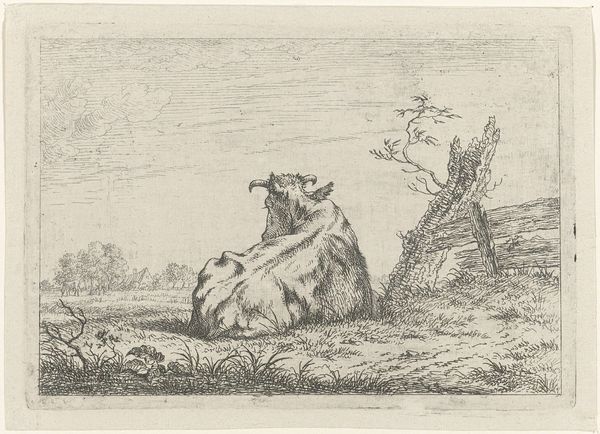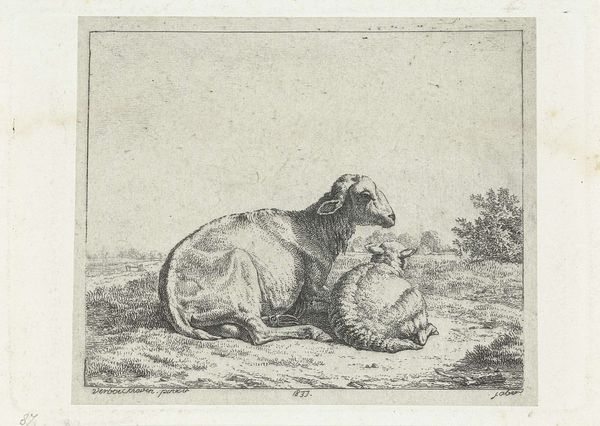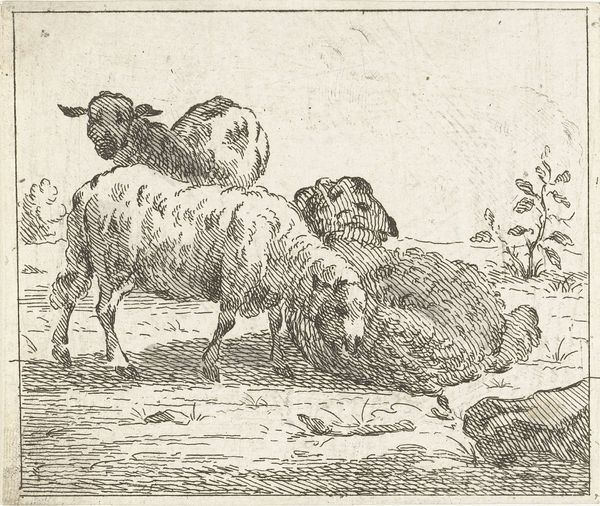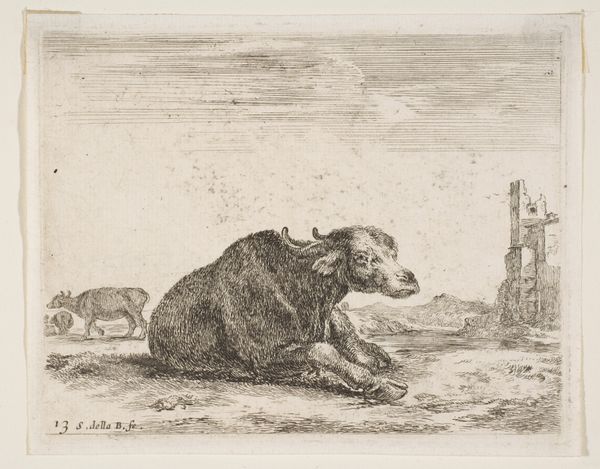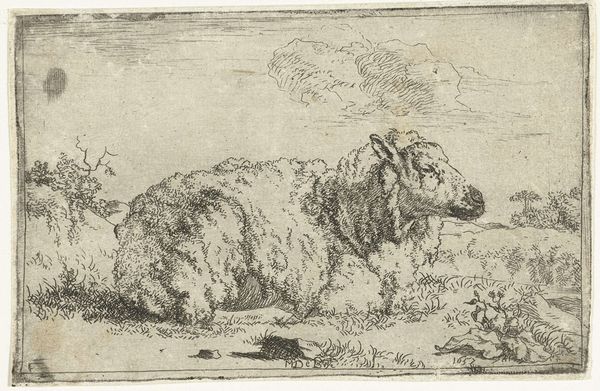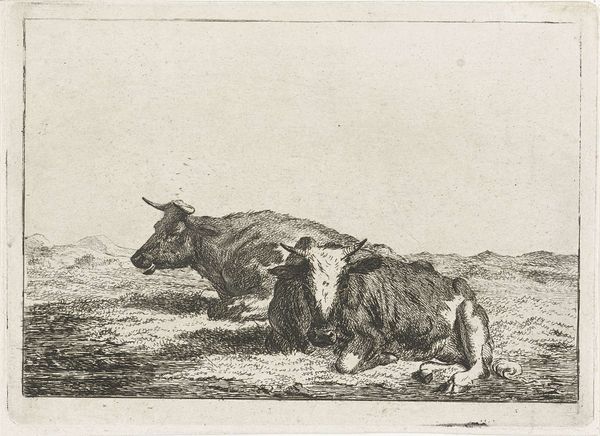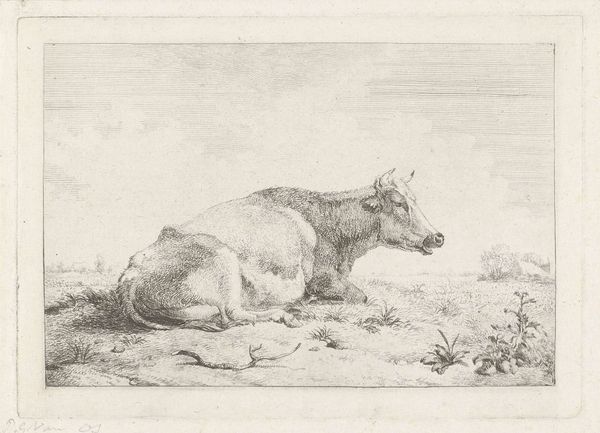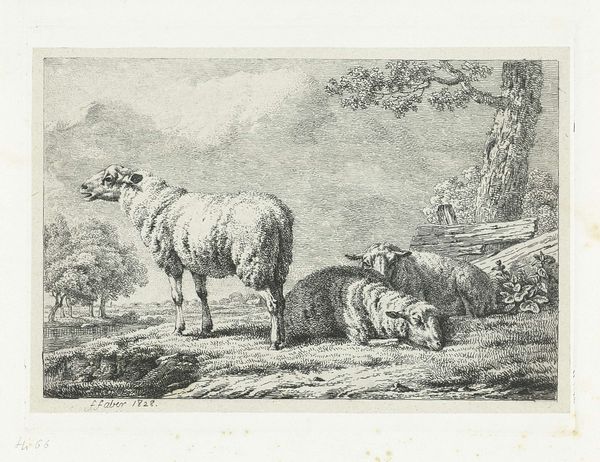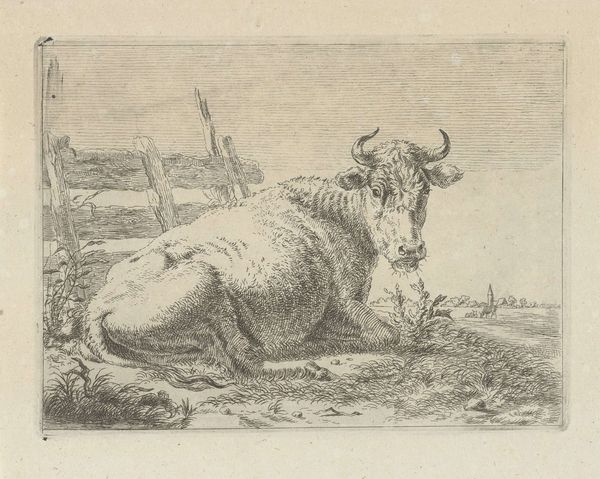
drawing, print, etching
#
pencil drawn
#
drawing
#
aged paper
#
light pencil work
# print
#
etching
#
pencil sketch
#
old engraving style
#
landscape
#
personal sketchbook
#
sketchwork
#
sketchbook drawing
#
pencil work
#
genre-painting
#
sketchbook art
#
realism
Dimensions: height 282 mm, width 349 mm
Copyright: Rijks Museum: Open Domain
Curator: Let's consider this delicate etching titled "Landschap met een koe en twee schapen," which roughly translates to "Landscape with a Cow and Two Sheep," made sometime between 1821 and 1869 by Christiaan Godfried Schutze van Houten. Editor: Immediately, the tonal range captures my eye. It's subtle, almost ghostly. The lines create texture but also evoke a sense of transience; it feels like a captured moment fading already. Curator: Considering the period and the agrarian context, it’s tempting to view this as a representation of the rural idyll, a sort of romanticized notion of countryside life that conveniently omits the harsh realities of agricultural labor, exploitation, and class disparities of the era. It also harkens to the period's colonial land grabs that supported that way of life. Editor: I see your point, but if we just focus on its internal composition, there’s a carefully calibrated balance between the detailed foreground—the cow and sheep rendered with intricate line work—and the hazier, almost dreamlike background. It establishes depth, yes, but it also sets up a visual dialogue between clarity and ambiguity. Curator: The gaze of the cow feels weighted. When viewing van Houten’s image, it might also be important to recall the rise of industrial farming happening concurrently—the commodification of animals that robbed them of agency. This image might, unintentionally, capture the dawn of a less romantic relationship between humans and nature. Editor: Maybe, but I'm struck by the textures created. The aging of the paper adds its own subtle variations; the artist captures light differently when using a thin versus bold line, while also hinting at volume and mass, resulting in a captivating visual interplay that keeps our attention moving across the composition. Curator: Ultimately, whether van Houten meant to engage with socioeconomic issues or not, the image carries those echoes, allowing us to question idyllic presentations. It allows us to consider how art, even in its seemingly simple renderings, engages in deeper, ongoing sociopolitical conversations. Editor: Perhaps, and if anything, this exercise just underscored the ability of close observation of an artwork’s elements to offer avenues of interpreting history that might otherwise get lost.
Comments
No comments
Be the first to comment and join the conversation on the ultimate creative platform.
